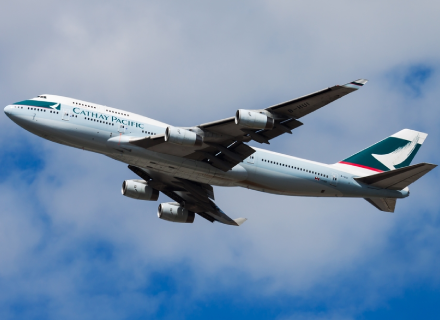As the aviation industry continues to grapple with the fallouts of the safety crisis in Boeing, now Airbus and British powerplant maker Rolls-Royce have come under pressure from the airlines to provide clarity, the aftermath of an engine emergency that forced Cathay Pacific to review its fleet of A350s.
Although the manufacturers were reportedly reluctant to suggest worldwide A350 fleet inspections, regulators have now stepped in, as the investigators look into the fuel system of the Cathay Pacific flight that was forced to return to Hong Kong.
A350 fleets operated by Singapore Airlines and Japan Airlines were undergoing preventive maintenance after Cathay Pacific revealed that fuel line repairs were required on 15 of the airline’s 48 A350 aircraft.
Even though the current position seems to indicate that no widespread defect has been found right away, as per a Reuters report, it was too soon to rule out additional research/analysis that might eventually call for other airlines to take action.
The jet headed for Zurich had to return to Hong Kong due to an engine issue that was later found to be caused by a fuel leak, thereby putting both the A350-1000, the larger of the two models in the Airbus A350 family, and its Rolls-Royce XWB-97 engines, under heavy scrutiny.
A flexible pipe feeding a fuel injection nozzle in the XWB-97 engine was found to have been punctured, according to preliminary investigations. Investigators based in Hong Kong are now expected to concentrate on determining whether the hole caused the fuel leak or if it was the result of another issue that hasn’t been found yet.
Meanwhile, Europe’s air safety regulator has now ordered inspections on engines of the A350-1000 jets, saying that it was acting to prevent similar events after consulting regulators and accident investigators in Hong Kong, where Cathay is based, as well as Airbus and engine supplier Rolls-Royce.
“This action is a precautionary measure, based on the information received from the initial investigation of the recent Cathay Pacific serious incident and on the airline’s findings in its own subsequent inspections,” EASA Executive Director Florian Guillermet said in a statement.
EASA also confirmed that the failure of a hose in the fuel system had caused a fire that was quickly tackled by the crew.
“We will continue to follow closely all information that will be made available through the ongoing safety investigation,” Guillermet added.
The move affects the larger of two models of twin-engine A350, the A350-1000, which represents 15% of the A350 fleet or 86 jets. The smaller and widely sold A350-900 is not affected.
EASA has given airlines between three and 30 days to carry out visual checks and measurements on the fuel hoses but did not call for parts to be removed for the work, unless they were found to be damaged. It excluded engines already inspected by Cathay.
Rolls-Royce and Airbus are now working closely with authorities to comply with the planned directive, to minimise any short-term disruption.
EASA said the Cathay Pacific flight powerplant fire had caused heat damage to the engine housing, including ducts used for reverse thrust on landing.
“This condition, if not detected and corrected could, in combination with additional failures, lead to a more severe engine fire and resulting damage to an aeroplane,” it said.
By ordering checks, however, EASA partially overrode efforts by manufacturers to avoid disruptive action on the whole fleet based on their own technical analysis, Reuters stated.
Several airlines have already carried out precautionary inspections on their Airbus A350 fleets, immediately after Cathay Pacific found 15 planes that needed fuel line repairs. The affected aircraft was a five-year-old Airbus A350-1000, which was using Rolls-Royce’s Trent XWB-97 engines.
However, carriers are also inspecting the more popular A350-900 aircraft which use a different engine model.
While airlines like Japan Airlines and Qatar Airways have completed the maintenance checks on their A350-1000 fleets, Air China will perform general engine checks. Singapore Airlines, which has a fleet of 63 A350-900 planes, said it was inspecting the engines on its aircraft but there was no impact on flights. Taiwan’s Starlux, on the other hand, which operates six A350-900s, said it had contacted Rolls-Royce “out of caution” and was awaiting an official reply.
Air France and Lufthansa Group, which also have A350-900s, are reportedly in touch with Rolls-Royce and Airbus and are monitoring the situation closely.


